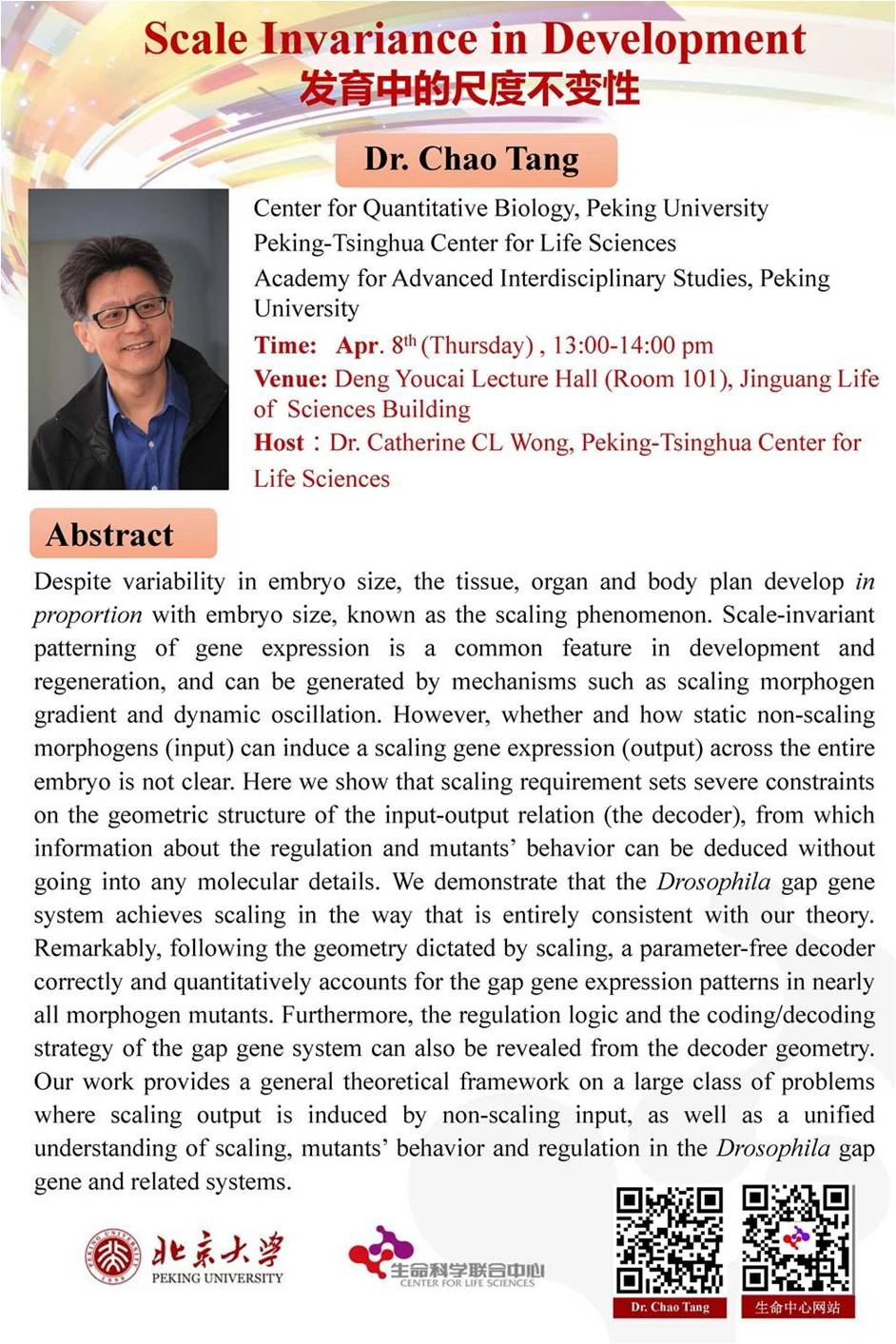
Speaker: Dr Tang Chao
Time: 13:00-14:00 , April 8
Location: Deng Youcai Lecture Hall (Room 101), Jinguang Life Sciences Building
Host:
Dr Catherine CL Wong, Peking-Tsinghua Center for Life Sciences
Abstract:
Despite variability in embryo size, the tissue, organ and body plan develop in proportion with embryo size, known as the scaling phenomenon. Scale-invariant patterning of gene expression is a common feature in development and regeneration, and can be generated by mechanisms such as scaling morphogen gradient and dynamic oscillation. However, whether and how static non-scaling morphogens (input) can induce a scaling gene expression (output) across the entire embryo is not clear. Here we show that scaling requirement sets severe constraints on the geometric structure of the input-output relation (the decoder), from which information about the regulation and mutants’ behavior can be deduced without going into any molecular details. We demonstrate that the Drosophila gap gene system achieves scaling in the way that is entirely consistent with our theory. Remarkably, following the geometry dictated by scaling, aparameter-free decoder correctly and quantitatively accounts for the gap gene expression patterns in nearly all morphogen mutants. Furthermore, the regulation logic and the coding/decoding strategy of the gap gene system can also be revealed from the decoder geometry. Our work provides a general theoretical framework on a large class of problems where scaling output is induced by non-scaling input, as well as a unified understanding of scaling, mutants’ behavior and regulation in the Drosophila gap gene and related systems.